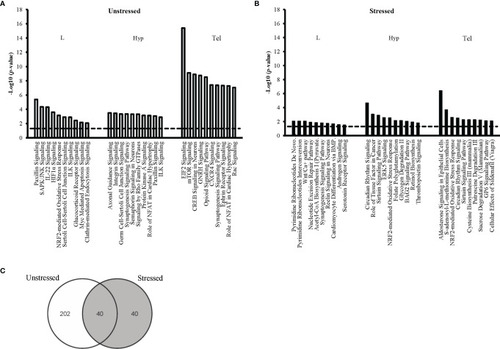Figure 3
- ID
- ZDB-FIG-220518-49
- Publication
- Nozari et al., 2022 - Brief Developmental Exposure to Fluoxetine Causes Life-Long Alteration of the Brain Transcriptome in Zebrafish
- Other Figures
- All Figure Page
- Back to All Figure Page
|
Top ten affected canonical pathways following early-life exposure to fluoxetine. The ten pathways with the highest level of significance (i.e. lowest p-value) for each target tissue are shown in larval heads (L), hypothalmus (Hyp), and telencephalon (Tel) in the unstressed |

